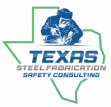Last summer we received a call from the owner of a small Texas manufacturer who got inspected by OSHA and had just received the letter below.
This is a 24 point laundry list of virtually all OSHA standards that apply to a typical manufacturer, and the company was in violation of all of them. How overwhelming!
The owner was in a state of panic and didn’t know what to do, and unfortunately we were the ones who had to tell them it was too late: not only did they have to fix and manage everything moving forward, a major undertaking for any small manufacturer, but they would likely get huge fines likely to run into the $10s or even $100s of thousands of dollars.
Not only did her company not have any of these requirements, she didn’t know how to prepare for an OSHA inspection either.
See the contents of the OSHA inspection letter below:
This letter is an official request to provide this office with access to all written materials, existing on or before [enter date here] as they relate to the following topics:
- Any and all OSHA form 300 Injury and Illness Log for calendar years 2019, 2018, 2017;
- Any and all OSHA 300A, posting, for calendar years 2018, 2017, 2016;
- Any and all personal protective equipment and/or hazard assessments conducted at the facility;
- Any and all air sampling results conducted for the following areas; powder coating area, dip tank area, welding and cutting area and abrasive grinding area either by or by a third party contractor for any airborne chemicals including but not limited to dusts, particles, fumes, vapors, and gases;
- Any and all noise monitoring results performed either by or a third party contractor;
- Any and all documents that reflect a hearing conservation program;
- A list of employees covered under the hearing conservation program;
- Any and all documents related to baseline and annual audiometric testing performed on employees;
- Any and all training provided for occupational noise;
- A list of hearing protection offered at the facility. This list should include the make, model, and NRR rating (protection factor) for each type of hearing protection offered;
- Any and all documents that reflect a written hazard communication program;
- Any and all documents related to hazard communication training given to employees. These documents include, but are not limited to the proper use and storage of hazardous chemicals, proper labelling of chemicals, use of safety data sheets (SDS), and signed training roster;
- Any and all documents that reflect a chemical inventory for hazardous chemicals;
- The company’s written respiratory protection program;
- Any and all documents related to training for the respiratory protection program. These documents include, but are not limited to proper use of respirators, proper cleaning procedures for respirators, information about appendix D of 29 CFR 1910.134, and signed training rosters for employees trained on the use of respirators;
- Any and all certifications from a physician showing that employees are medically fit to wear tight fitting respirators;
- Any and all fit test records for employees who regularly use respirators;
- Any and all information about respirators used at the facility, including dust masks. This list shall include the model of respirator, manufacturer of respirator, type of respirator, and cartridges for the respirator;
- Energy Control Program (Lock Out / Tag Out Program);
- Energy Control (Lock Out / Tag Out) training for authorized and affected employees at the facility. This includes training materials and training rosters and certifications;
- Specific energy control (Lock Out / Tag Out) procedures or energy control procedures for the Louis Allis Co. punch press, No. 4 Consolidated Punch press, and pneumatic air compressor;
- Any and all documents which include a powered industrial truck training program as required by 29 CFR 1910.179(1);
- Any and all certifications for employees who drive forklifts at the facility.
- Any and all records that show how basic advisory information of 1910.134 Appendix D for employees who wear a N95 respirator for voluntary use.
If your company doesn’t have a comprehensive and fully functional OSHA compliance program, you remain at risk for getting a similar letter and major fines if you get inspected.
We routinely get contacted by companies only after they get in trouble with OSHA, when it’s already too late to do anything about it.
Be proactive about safety, before it’s too late.
Schedule Your Free, Confidential, No-Obligation
OSHA Compliance Consultation Today
By CLICKING HERE or calling 512-457-0374
